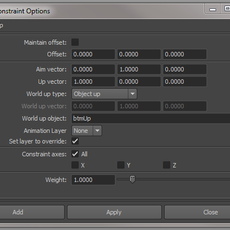
All patients with major trauma should be considered to have a potential cervical spine injury unless proven otherwise. The American Spinal Injury Association impairment scale MANAGEMENT The American Spinal Injury Association impairment scale (figure 1) is widely used by neurosurgeons to aid assessment.įigure 1. Manifestations of injury at thoracic or lumbar level:. Manifestations of injury at cervical level:. Cervical spine instability may also be caused or exacerbated by chronic conditions – rheumatoid arthritis, ankylosing spondylitis, infection, tumors or congenital conditions such as Klippell-Feil or Down’s syndrome. The most commonly affected regions are cervical (C1, C2 and C4-C6) and thoraco-lumbar junction (T11 to L2). Loss of any of these columns can cause instability. Posterior: made up of the facet joints, their ligaments and the ligamentum flavum. Middle: comprising the posterior half of the vertebral body, disc, annulus and the posterior longitudinal ligament. Anterior: consisting the anterior longitudinal ligament and the anterior half of the vertebral body. Instability can be defined as “the loss of ability of the cervical spine under physiological loads to maintain relationships between the vertebrae in such a way, that spinal cord or nerve roots are not damaged or irritated and deformity or pain does not occur” (Leemans and Calder, 2012 – see further reading). Other causes include penetration by bullets or foreign objects. Acceleration and deceleration, as occurs in motor vehicle accidents and falls, is the most common mechanism of abnormal spinal column movements. Function of nerves through the injured area is lost. Necrosis of grey and white matter occurs. Microcirculation is impaired by oedema and haemorrhage, further compromised by vasospasm.  Primary injury causes microscopic haemorrhages in grey matter and oedema of white matter of cord.
Primary injury causes microscopic haemorrhages in grey matter and oedema of white matter of cord. 
Lateral flexion: often associated with flexion or extension injuries.Hyperextension-rotation: a very unstable combination, associated with a high incidence of cord damage.Hyperextension: due to applied force to the front of the head or severe whiplash injury more common than flexion injuries often associated with cord injury (for example, a “hangman’s fracture,” fracture of both pedicles or pars interarticularis of C2, the axis).Axial loading (vertical compression): causes loss of vertebral body height with disruption of the vertebral body it may displace posteriorly causing cord damage although the spine remains relatively stable.Hyperflexion-rotation: disruption of posterior ligamentous complex, may cause cervical root injury usually without spinal cord damage.Hyperflexion: due to a blow to the back of the head or deceleration often stable with no neurological damage.Older adults (age related degeneration and falls).These are often associated with other severe trauma with or without traumatic brain injury.There are approximately 10,000 cases of acute spinal cord injury in the US every year.
 What are the signs and symptoms of autonomic hyper-reflexia?. What are the potential difficulties with the airway?. Describe the anatomical columns of the cervical spine. The answers can be found at the end of the article, together with an explanation.
What are the signs and symptoms of autonomic hyper-reflexia?. What are the potential difficulties with the airway?. Describe the anatomical columns of the cervical spine. The answers can be found at the end of the article, together with an explanation. 
Before continuing, try to answer the following questions.








 0 kommentar(er)
0 kommentar(er)
